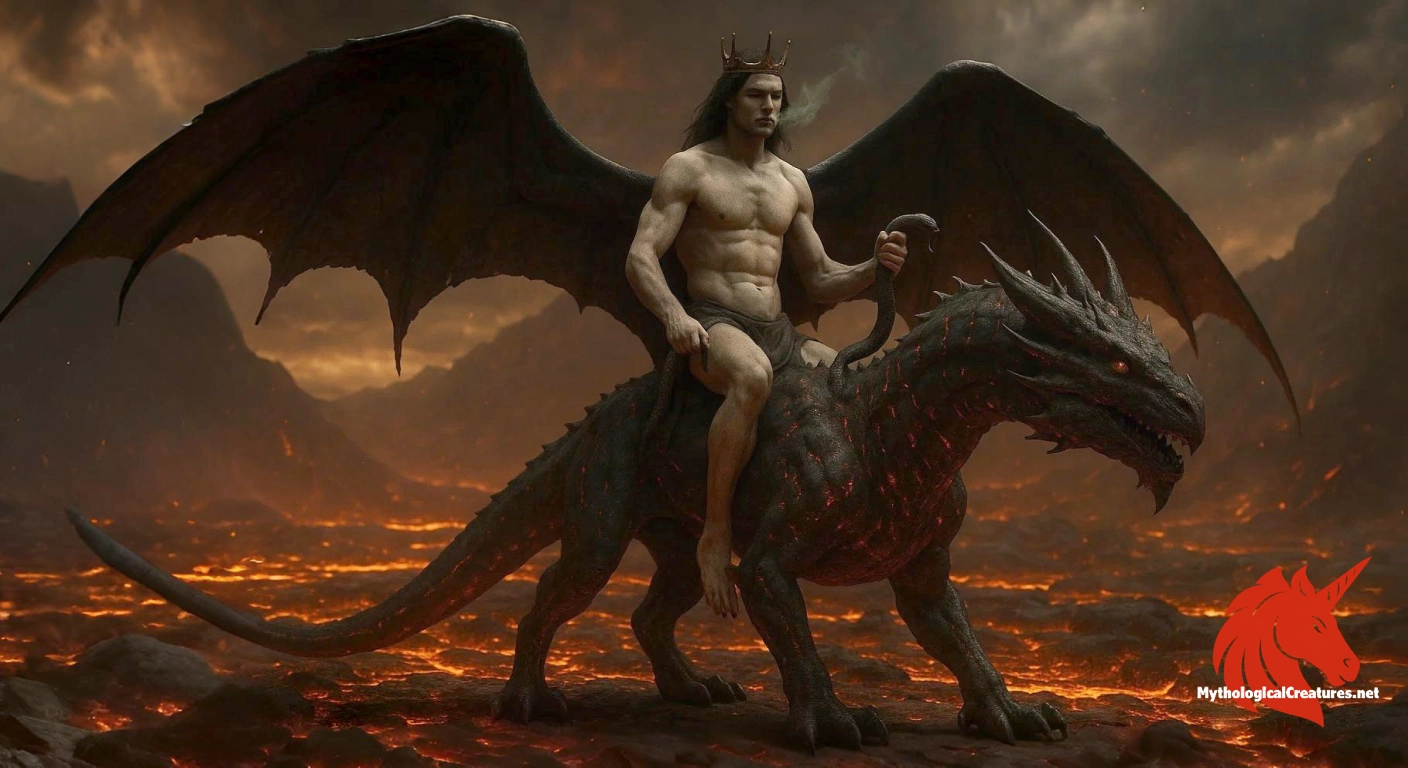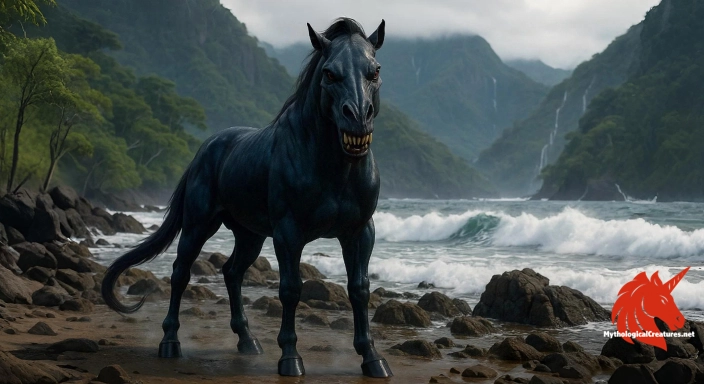Astaroth: Astaroth is a prominent demon in Christian demonology, recognised as the Great Duke of Hell.

Astaroth
Astaroth - Astaroth is a pivotal figure in demonology, symbolising the corruption of forbidden knowledge and the seductive power of evil.
Origins & First Encounters
Astaroth is a prominent figure in demonology, serving as the Great Duke of Hell with a formidable reputation that has intrigued scholars and occult enthusiasts alike. His origins are steeped in ancient myth, with echoes of the Near Eastern goddess Astarte subtly woven into his identity, even though his nature diverges markedly from that divine archetype. Emerging from early medieval grimoires and esoteric manuscripts, his persona embodies a blend of dark wisdom and corrupt power. Over time, his narrative evolved from a mere spectral force into a sophisticated symbol of temptation and retribution. His early attestations in cryptic occult texts reveal a complex being who offers both peril and forbidden knowledge. With a history interlaced with mystery, Astaroth became a symbolic pillar in the infernal hierarchy of Hell. The myth surrounding him reflects the era’s ambivalence towards power, with some viewing his influence as both a curse and a source of grim enlightenment. His enduring legacy in demonological lore highlights a continual dialogue between ancient myth and evolving interpretations of evil. His rich tapestry of myth continues to inspire a wide range of literary and artistic expressions. The layered complexity of his character invites ongoing reinterpretation amid the modern resurgence of occult interests.
Source Texts & Tale Variants
The lore surrounding Astaroth is deeply embedded in a variety of occult writings, many of which date back to the medieval and Renaissance periods. His character is most vividly documented in influential texts such as the Lesser Key of Solomon, where he is detailed as a commanding duke within the hierarchy of Hell. Various manuscripts offer a range of portrayals, at times depicting him as a dealer in secret knowledge and at other times as a duplicitous tempter. Numerous grimoires provide rituals for summoning and communicating with him, emphasising his function as a conduit to hidden truths. Some sources intertwine his story with those of other demonic entities, thereby adding layers to his mythological presence. Different narrative strands emerge across cultures, with some traditions portraying him as reluctantly subservient to a greater evil. Despite the multiplicity of versions, a persistent theme of intellectual cunning and perilous wisdom permeates these texts. The diversity of his representations underlines the dynamic evolution of demonological literature and its enduring fascination with the infernal.
Form & Powers
In many depictions, Astaroth is presented as a regal yet monstrous figure whose appearance balances human sophistication with demonic traits. His visage is often described as combining the stature of a warrior with supernatural embellishments, sometimes adorned with serpentine elements or bat-like wings. His eyes, imbued with a penetrating glow, mirror an ageless intelligence and a hint of malice. Artistic portrayals frequently show him draped in luxuriant, albeit decaying, regalia that speaks to both his fallen grandeur and his corrupt nature. His form is known to shift, occasionally taking on a handsome, deceptive guise before revealing a more grotesque, fearsome aspect. Details such as elongated horns, clawed hands, and a serpentine tail enhance his menacing aura. The intricate depiction of his armour and attire, laden with obscure symbols, underscores an amalgamation of noble bearing and infernal decay. Multiple layers of allegory animate his physical form, each feature contributing to an overall impression of otherworldly dread. His mutable appearance allows artists and occultists alike to project contemporary concerns of beauty intertwined with decay.
Regional Faces
While Astaroth’s origins lie firmly within European demonology, his legend has been adapted to fit the cultural narratives of various regions. In the Mediterranean, for example, he is sometimes portrayed with a softer edge, as a giver of esoteric wisdom rather than an outright embodiment of evil. Eastern European folklore occasionally tempers his fearsome reputation, attributing to him a dual nature that vacillates between enchantment and terror. In Renaissance Italy and Spain, artistic renditions have incorporated local symbols of power and decay, blending traditional demonological imagery with regional aesthetics. Western occult circles have maintained a relatively consistent depiction, framing him as a central figure in the infernal hierarchy. However, in smaller communities with a rich tradition of pagan belief, elements of divinity and malevolence often merge within his character. Local myths and rituals help reshape his persona to reflect indigenous cultural values and historical contexts. Such regional adaptations demonstrate the fluidity of myth, where Astaroth’s core identity is reinterpreted to resonate with diverse societal fears and fascinations. His varied depictions underscore the capacity of mythological figures to transcend geographical and cultural barriers.
Cultural Parallels
The figure of Astaroth invites comparison with numerous entities across the spectrum of global demonology and myth. Much like other high-ranking infernal beings such as Asmodeus and Belial, he occupies a space where power, temptation, and hidden wisdom converge. His roots in Near Eastern mythology draw intriguing parallels with deities who once symbolised fertility and the natural world, blurring the lines between divine and demonic. In some esoteric traditions, his fall from grace mirrors that of a once luminous being, akin to narratives found in various mythic inversions of celestial order. The dual nature of offering sagacious insights while also being a harbinger of ruin reflects a universal mythic theme—where enlightenment is forever intertwined with a dark cost. His role as both a teacher of forbidden lore and a manipulator of chaotic forces resonates with broader archetypes seen in myths about fallen angels and trickster gods. Comparative analysis reveals that, despite regional and temporal variations, his character consistently embodies the dangerous allure of transgressive knowledge. These cross-cultural reflections emphasise the enduring relevance of his myth in encapsulating the perennial conflict between order and chaos.
Legacy & Modern Evolution
Over the centuries, the portrayal of Astaroth has undergone a remarkable transformation, evolving from a stark symbol of demonic power into an emblem of complex moral ambiguity. Initially chronicled in grimoires and early occult manuscripts, he was traditionally feared as an embodiment of malevolent authority. With the Renaissance came a reinvention of his character in art and literature, where he began to signify the intricate interplay between corruption and hidden wisdom. This evolution reflects shifting cultural attitudes toward authority, knowledge, and the nature of evil. In modern occult practices, Astaroth is sometimes seen not merely as a force of pure darkness but also as a guide into the obscure realms of forbidden understanding. Contemporary portrayals in film, music, and literature have reimagined him through lenses that blend horror with intellectual allure. His image has inspired a countercultural narrative in which rebellion against conventional moralities is both celebrated and critiqued. Today, Astaroth remains a potent symbol in modern esotericism, embodying timeless themes of transformation, seduction, and the perilous quest for hidden truth. This enduring legacy ensures that his myth continues to evolve in tandem with the cultural and spiritual inquiries of successive generations.
Interesting Fact
Astaroth’s iconography varies widely across texts, with some depictions portraying him as both a corrupter of souls and a bearer of forbidden wisdom, reflecting the complexity of demonological symbolism.
Quick Creature Info
Associations:
Our Mythic Legendary Rating:

Also Sometimes Known As:
Habitat:
Supernatural Powers:
Physical Attributes:
Abilities:
Behavior:
Weaknesses:
Lore:
References
Discover Another Mythical Legend You May Not Have Heard Of?
Uncover the mysteries of ancient folklore and expand your knowledge of legendary beings from cultures around the world.
Dare to Meet the Wihwin....
Mythical Disclaimer: The images and data on this site are derived from various historical and literary sources, but we have found that many myths often have multiple versions and interpretations across references, sometimes contradictory. As a result, these creature depictions are artistic interpretations—imaginative blends of folklore, legend, and a dash of AI guesswork. Because creature descriptions vary widely, our illustrations and accompanying information represent our best effort to honor mythology while bridging creative gaps. Enjoy these interpretations—just remember, we've done our best to respect the stories and validate available data, but in the realm of mythology, details often shift, imagination leads the way, and nothing is ever set in stone!
Curated by the Mythological Creatures Team (rev. May 2025)
